Early summer flowers brighten my Texas garden
I didn’t realize how many white flowers I’m growing until I photographed what’s blooming this week. Let’s start with pale pavonia, aka Brazilian rock rose (Pavonia hastata). I love the tissuey white flower with a maroon eye and veins.
I grew a moonflower vine (Ipomoea alba), one of my old favorites, from seed this year, and it’s growing up a cattle-panel trellis on the deck, reaching for the sun. The plate-sized flowers are delightfully fragrant when they open in the evening.
Well, OK, this magnolia isn’t in my garden but a neighbor’s, but I’m enjoying the flowers on my walks. I don’t actually love the trees themselves here in Austin because they always look a bit dry and chlorotic in our alkaline, relatively shallow soils. But the enormous, creamy white flowers of Southern magnolia (Magnolia grandiflora) are something to behold and to smell — so gorgeous and lemony fragrant.
They remind me of my childhood in South Carolina, where magnolias grow better than in Austin thanks to acidic soil and higher rainfall.
One last white flower in my garden right now is the white variety of pink skullcap (Scutellaria suffrutescens ‘White’), such a tidy, pretty native plant for bright shade. The ivory flowers stand out against a steel-pipe planter and dark-leaved ‘Burgundy Ice’ dyckias.
Purple flowers are abundant too, starting with summer-blooming vitex (Vitex agnus-castus), which I keep shrub-sized through regular pruning and cutting to the ground every February.
‘Peter’s Purple’ bee balm (Monarda fistulosa ‘Peter’s Purple’) is putting on a big show right now, getting plenty of attention from visitors and bees.
And heartleaf skullcap (Scutellaria ovata), a spring-blooming native, is almost done. Here’s a picture from a week or two ago, at peak bloom.
And why not — I’ll throw in a big, blue rose of a plant, my neighbor’s whale’s tongue agave (A. ovatifolia), surrounded by red autumn sage (Salvia greggii), part of a curb-side garden I planted for her to blend with my own. These are tried-and-true plants for sun or morning sun/afternoon shade.
So what’s blooming in your garden right now that you really love?
I welcome your comments; please scroll to the end of this post to leave one. If you’re reading this in a subscription email, click here to visit Digging and find the comment box at the end of each post.
_______________________
Digging Deeper: News and Upcoming Events
The Austin Daylily Society will host a free garden tour on Sunday, May 28, from 10 am to 2 pm. Four private gardens featuring lots of daylilies will be open to the public, including Tanglewild Gardens and Tom Ellison’s lovely Tarrytown garden.
Calling all pond lovers! The Austin Pond & Garden Tour is coming up June 3rd (North Austin ponds and night pond) and 4th (South Austin ponds). Tickets, which are $20, can be purchased online and include entry to all 20 ponds.
Get on the mailing list for Garden Spark Talks. Inspired by the idea of house concerts, I’m hosting a series of garden talks by talented designers and authors out of my home. Talks are limited-attendance events and generally sell out within just a few days, so join the Garden Spark email list for early notifications. Simply click this link and ask to be added.
All material © 2006-2017 by Pam Penick for Digging. Unauthorized reproduction prohibited.


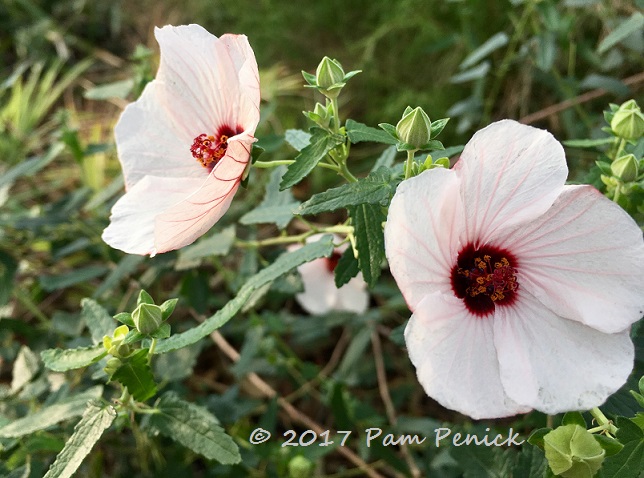
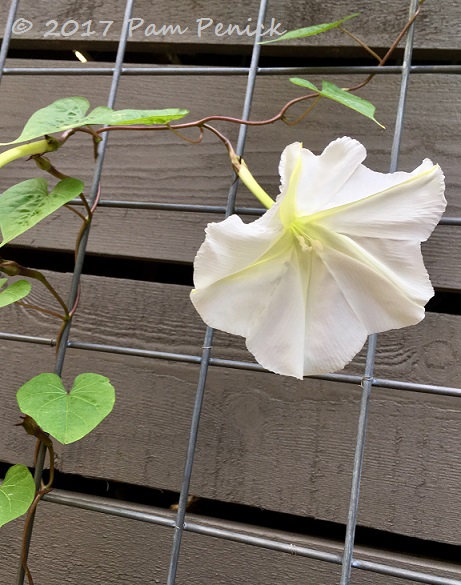
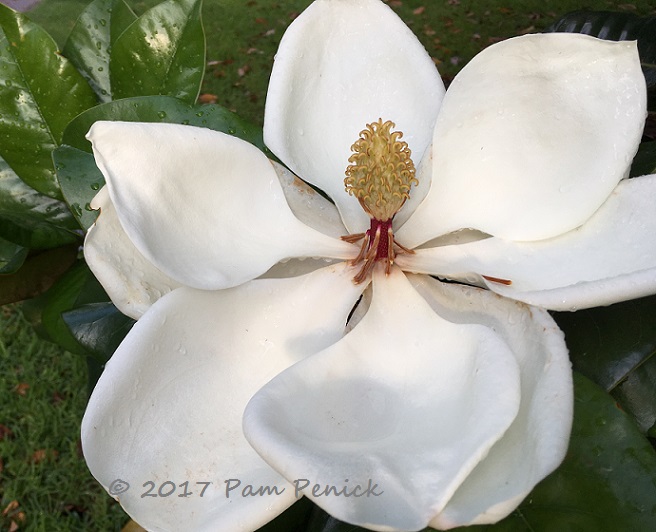
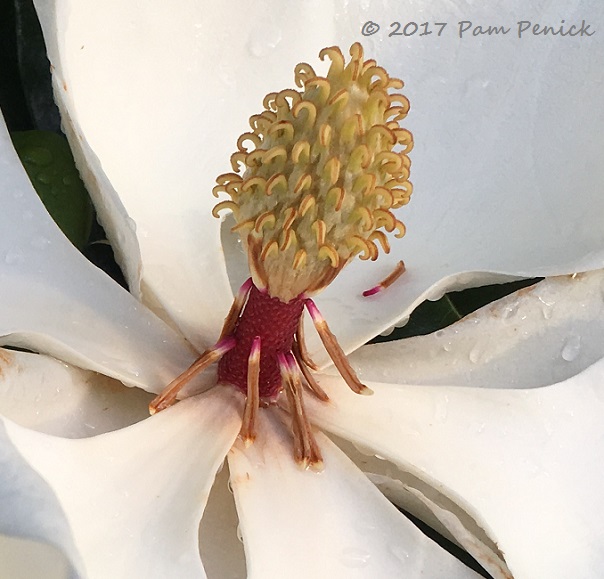
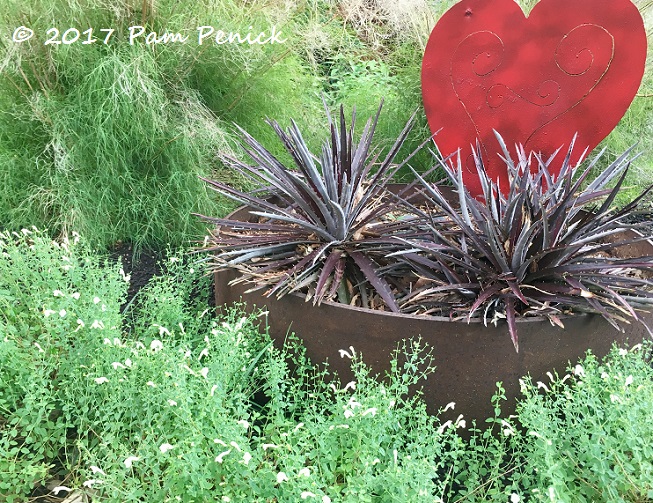
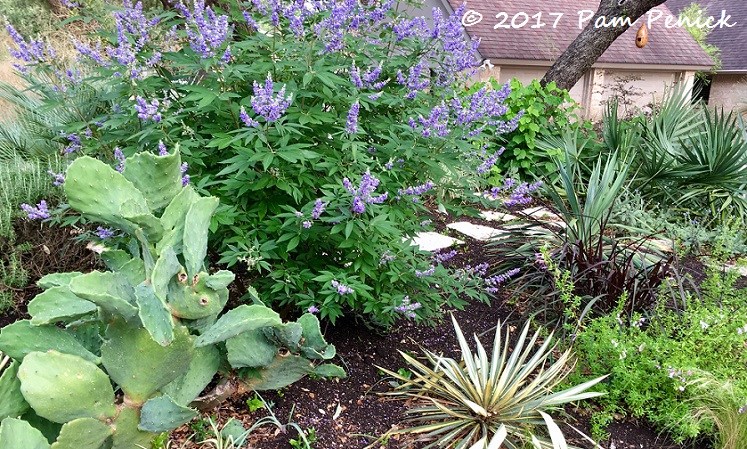
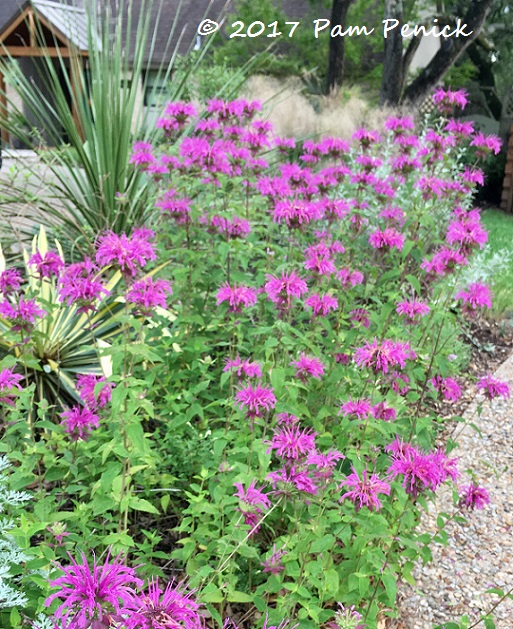
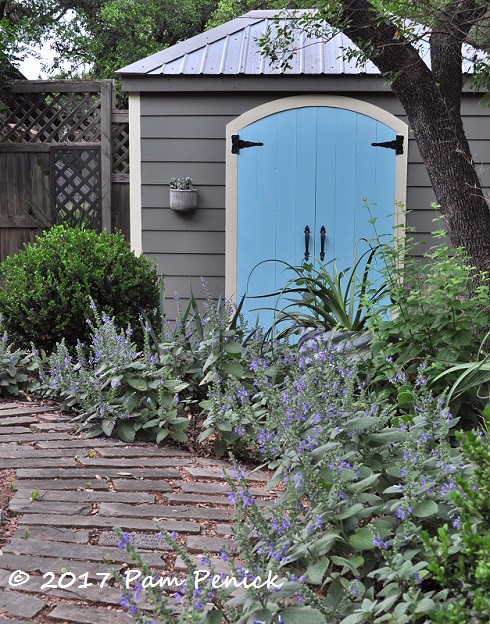
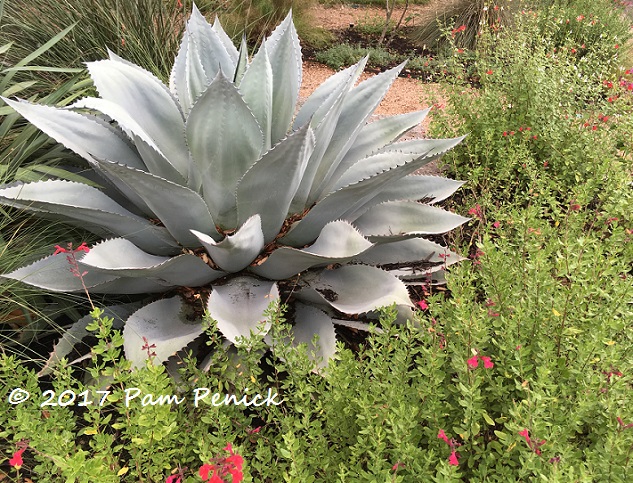
Your garden looks lovely, Pam. Love the Brazilian Rock Rose and I had no idea there were different varieties of Rock Rose. When I see photos of your garden, the words “peaceful”, “restful”, “relaxing”, and “serene” come to mind.
That’s lovely to hear. Thanks, Laura. —Pam
That magnolia does look out of place in Austin even though it seems to be a Southern tree. We have a few of them here where I live in IN. They have to be in a protected place to do well here. Those blooms are beautiful and then the funny pods with big red berries are interesting.
In my garden the Mock Orange Shrub blooms are the most rewarding due to their fragrance. There are several things blooming though all of which make me happy. 🙂
Mock orange is so lovely and fragrant. Enjoy it, Lisa! —Pam
Your sweep of blue Scutellaria ovata got me to look it up, and: ta-da! a form of it is native here. Onto the ever-lengthening list it goes…
The magnolia here is pushing its range a little, but my father, a South Carolinian like you, felt that it wouldn’t be a garden without one. So glad he persisted.
Remind me where you garden, Nell? I’m curious to know how far the skullcap ranges. —Pam
The magnolia’s growing on the northeast side of the house in zone 6b — western foothills of the Blue Ridge in western Virginia. Its shape is clearly affected by exposure to north and west winds, a lot fatter and flatter than it would be in a more truly southern location (e.g., in town, which is zone 7). This garden’s elevation is about 1200 ft; it varies a lot in the county, which is full of hills and hollers and some actual mountains.
For a variety of reasons, this area’s rich in native plants: Half the county is two national forests, and we’re just far enough from cities to have lower-than-average development pressure. We’re a transit zone between several different ecoregions (just over low mountains from the piedmont, with passes to the truly mountainous Appalachian west). Up-and-down topology and plentiful springs/creeks/rivers make for many microclimates and habitats. Last but not least, the presence of three colleges makes what’s here more likely to be scientifically documented. The Flora of Virginia is helpfully online, with distribution maps for each plant, a HUGE assist in distinguishing truly locally adapted species and learning local flora. [vaplantatlas.org for any Virginians reading along]
There turn out to be several skullcaps that flourish here, including one that’s only in this county (bulk of range west of VA; that transit factor I mentioned).
It sounds like you live in a wonderful region for gardening, Nell. Thanks for sharing! —Pam
White flowers add such freshness to a garden! I’m enjoying my Shasta daisies and Tanacetum niveum right now. I also have a Southern Magnolia but the flowers are so high that they’re hard to enjoy except from a distance – still, the bees love them and that’s enough for me. The Agapanthus stampede has started here too. And then it’s impossible to ignore the Achillea ‘Moonshine’…
Sounds like a lot of lovely pale flowers in your garden, Kris. I keep meaning to try achillea in my garden, as I see it doing well here in shade. —Pam
Your post makes me want to add white to my garden, love the rock rose and moonflower vine. Do those two plants need shade? I was not successful with the traditional rock rose, maybe it needed more water and shade than I gave it. By the way, is another book in the works?
Moonflower vine likes sun, Heidi, even though it flowers after the sun goes down. 🙂 Brazilian rock rose (Pavonia hastata) does well in dappled shade or part shade in Austin. I’m not sure how much sun it can take. But our native rock rose (Pavonia lasiopetala), the hot-pink one, will definitely grow in sun or part shade.
No plans as yet for another book. 🙂 —Pam
Hi Pam! Love your variety of flowers.
Quick question – My Peter’s Purple bee balm has been showing off but now all the canes are splayed out from the middle of the plant (probably from weight of the flowers) and looking tired. Do you cut yours back after blooming to get a rebloom? IF so, how severely do you cut it?
Thanks so much!
Ruthie
Is it in a bit of shade, Ruthie? That might contribute to sprawling. In sun I haven’t noticed this happening, but I do have some bee balm in more shade than it likes, and it tends to lean there. To answer your question, though, no, I don’t cut it back right away. I typically let it go to seed and later in the season, around August, I may cut it back by half to neaten things up. If you experiment with deadheading, I’d be curious to know whether you get a rebloom. —Pam
Pam, my Peter’s Purple Monarda you gave me is also putting on a show, and spreading too! My S. ovata has expanded from two volunteer plants last year to a solid blooming swath about 5 feet long and 3 feet wide this year. I foresee endless work keeping in check. So, thanks for this brilliant post cheering me up when I need it most.
I’m happy to have provided a bit of cheer, Peter! It’s true that both ‘Peter’s Purple’ monarda and especially heartleaf skullcap are spreaders. I enjoy that about them and hope you do too (and are not cursing my name in a couple more years as you yank up skullcap). —Pam
I’m curious, when you originally planted some of these, like the bee balm and the two skullcaps, did you start with one plant from a nursery, and then the original plant spread over the years, or did you plant lots of starter plants? I love how your plants really fill an area, and mine never seem to do that. I don’t know if I am not planting enough to start, or my garden is still just very young. Or maybe both 🙂
That’s a great question, Annemarie. The white skullcap is a grouping of just 3 plants in front of the metal planter. As for the monarda and heartleaf skullcap, I’m pretty sure I started both of those swaths from multiple plants. For sure I did with the heartleaf skullcap — probably 5 small plants or divisions by the pond garden, and they eventually filled in the whole front of that border. I may have planted 2 or 3 of the monarda and encouraged it by leaving seedheads on the plants so it could spread. Both plants do tend to spread readily.
As you point out, it looks nice to have a big swath or a ribbon of plants, rather than just one or two here and there, and I’ve consciously done a lot of editing with this garden to make bigger swaths of certain plants, removing ones and twosies of others to make room, and buying groups of 5 rather than 1 or even 3. You can get a big impact by planting in a curving line or zigzagging irregularly across a pathway. The latter is a great way to lead the eye along a garden path.
Of course all of this does take time. My garden is almost 9 years old, and I’ve planted and divided a lot of plants over the years in order to spread them around the garden. Getting divisions from friends helps too. So the short answer is, buy more plants than you normally would (buy smaller sizes to save money), mass them naturally, encourage self-seeding or divide every few years to get more, and — hardest of all — be patient. 🙂 —Pam
This is great info, thanks so much for sharing! I actually just purchased my first set of five plants to use in a “ribbon” (I didn’t know it was called that, but it makes sense). I have one tiny little bee balm, but now I am thinking I will go back and get four more to fill out the area. And then wait a few years ;o)
Thanks!
I’m sure you’ve heard the gardening saying, “The first year it sleeps, the second year it creeps, the third year it leaps.” Here’s to the leap year, Annemarie! —Pam
This time of year I love to see my sedum Angelina in bloom. It’s one of my favorite plants anyway, a good fit for cold winters and hot, dry summers here in central Ohio.
Angelina does have a nice glow when in bloom. Enjoy! —Pam
I have a pure white pelargonium – but it needs a little more sun. Planted in a ribbon along the boundary wall. Plenty of cuttings to spread around.
Sounds beautiful, Diana! —Pam